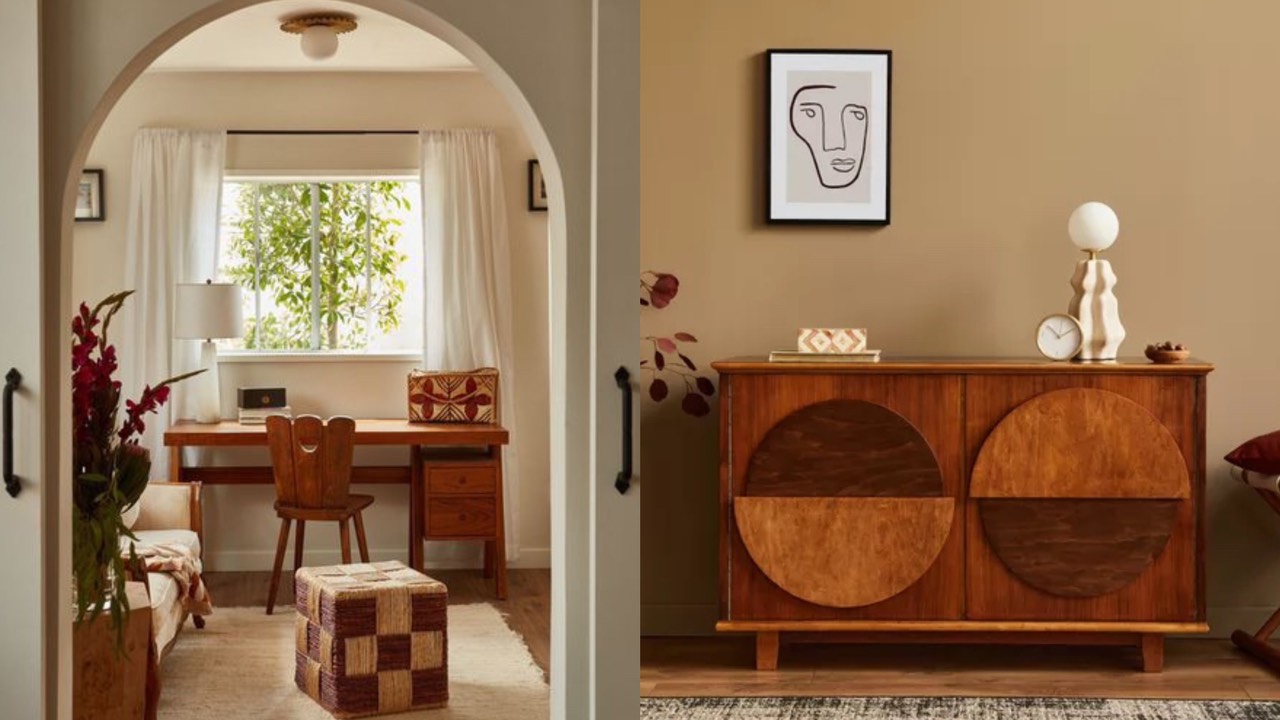
The new year gives us a chance to contemplate everything that has happened in the last 365 days, but it’s also a moment to look forward and consider what’s to come—and that’s especially true in the world of interior design. In 2023, home décor and design trends are primed to shift into earthy, texture-rich territory via brown and wooden furniture, handmade pieces, neutral color palettes, and bespoke touches that lend warmth and character to a space.
We spoke with a handful of interior designers for a pulse check on the specific home décor trends we can expect, and embrace, in 2023.
The ’60s and ’70s have made their way back into favor, and this era is apparent in everything from interior color palettes to furniture and décor. “People have moved beyond the bright shiny ‘mod’ vibes of California Palm Springs into the grittier artistic side of mid-century modern design,” says Avery Cox of Avery Cox Design. “Think organic shapes, earthy uneven tones, and textural finishes.”
She postulates that people are more drawn to these human, earthy-rooted details after years of stress, fear, and isolation. We’re collectively craving an ability to see the hand of the artist and celebrate unvarnished naturalism. It’s a “back-to-land movement,” if you will. “Look for pieces at thrift and vintage stores that have an obvious handmade quality to them,” Cox says. “Incorporate these details into your tablescape, as a toothbrush holder, or a beautiful floral arrangement on your mantel.”
Sharp edges will make way for softer shapes in your home this year, so expect to see more arched doorways and entries, curved furniture, and rounded sculptural forms. “Design trends always come back around, and we were just in a phase of modernism that included more square edges and straight lines,” says Katie Siegel, interior designer at Rumor Designs. “Now we are seeing the pendulum swing in the opposite direction, with curves offering a softness that was not included in the last set of design trends.”
Overall, the approach offers a more organic feel and an overarching sense of lightness. Siegal says the simplest way to incorporate this trend into your home is through furniture, such as sofas, chairs, vases, mirrors, and other small décor details. And if you’re ready to go big? Consider springing for that arched doorway.
Those toying with a bathroom renovation should consider the floating vanity trend, which lends an almost ethereal aesthetic to the space. “Whether it’s marble or quartz, floating stone vanities are making their way into bathrooms everywhere,” says April Gandy, the principal designer of Alluring Designs Chicago. “Vanities are usually one of the main features to consider when designing a bathroom, and a custom floating stone option offers a [striking] look.”
She especially likes the trend in powder rooms, where space is tight and there’s not as much of a need for storage.
Tramp art is a classic American-European form of woodworking that involves the meticulous carving and layering of wood and or utilitarian objects, like nails or sticks. “Like other things that show a human element, tramp art is enjoying a moment for its warmth, texture, and one-of-a-kind-ness,” says Cox. “You can use tramp art pieces in contemporary settings to bring character. For example, I love a tramp art box on a kitchen counter for holding things like tea or spices—and tramp art lamp bases are a perfect way to add a new element to a room when you’ve maxed out other woods, ceramics, and textiles.”
When antique shopping for tramp art, look for the details in material transitions, level of complexity, age, and material type to know whether or not you’ve found a true investment piece. Many people aren’t aware that these “school project-looking pieces” are actually quite valuable and coveted, says Cox. They’re also becoming harder to find—so if you see one, grab it.
Decades ago, brown furniture fell out of style because the trend became “overdone” and prices skyrocketed. Like any good trend, though, it’s circled back—just as we’re seeing a general uptick in a ’70s-era aesthetic (it’s all connected!). “A lot of brown furniture ended up in antique, thrift, and vintage stores where designers and artists started to pick it up due to its high quality and low cost, thus restarting the cycle of cool,” says Cox.
Today, furniture manufacturers have revived the trend, making it more accessible for everyone—so you don’t have to rely on a lucky thrift store find. Cox recommends pairing large pieces of brown furniture with punchy fabric for a modern spin. If you want to go small, fill an awkward corner with a captain’s chair or a wooden accent stool.


